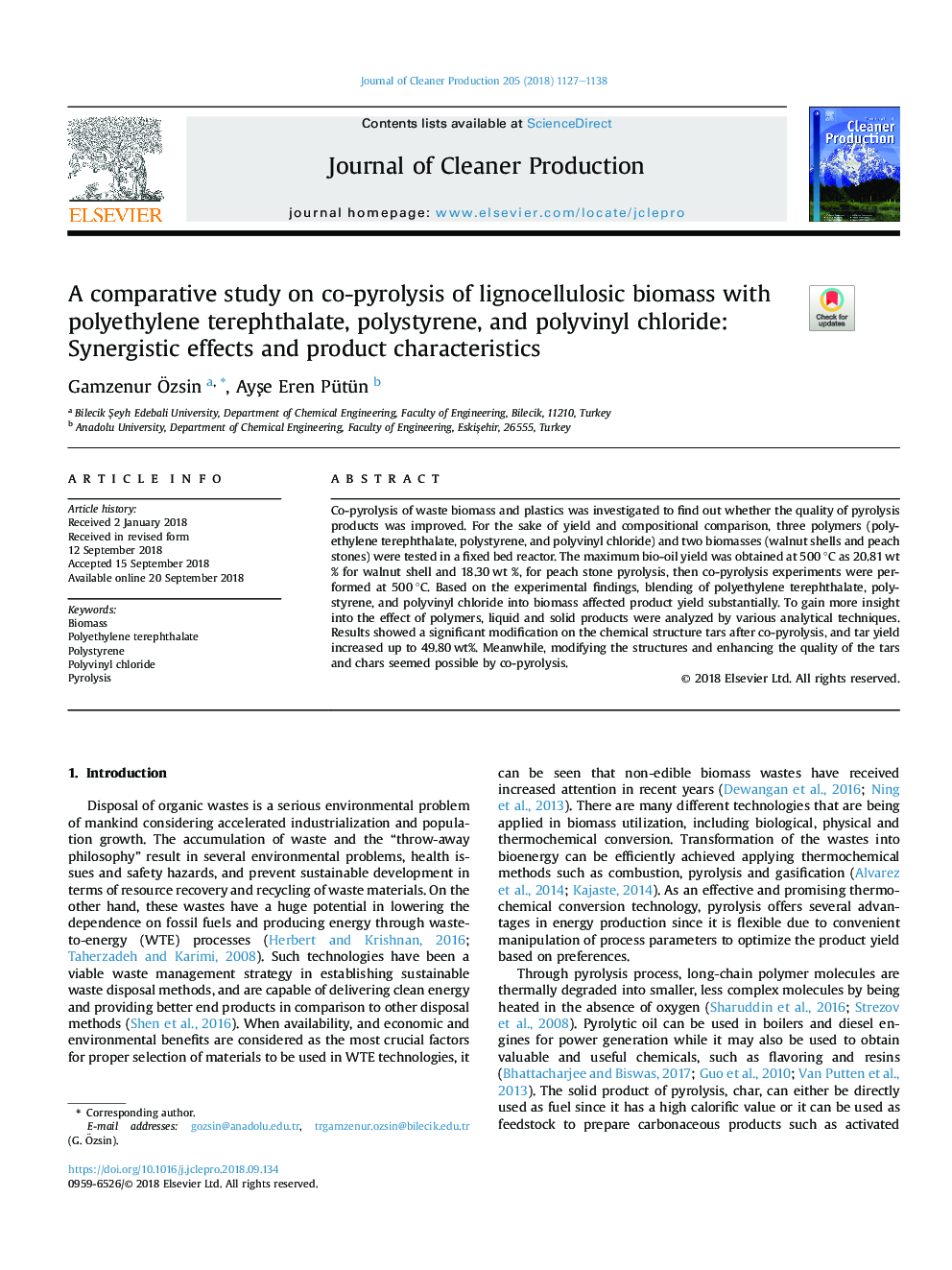| Article ID | Journal | Published Year | Pages | File Type |
|---|---|---|---|---|
| 11026419 | Journal of Cleaner Production | 2018 | 12 Pages |
Abstract
Co-pyrolysis of waste biomass and plastics was investigated to find out whether the quality of pyrolysis products was improved. For the sake of yield and compositional comparison, three polymers (polyethylene terephthalate, polystyrene, and polyvinyl chloride) and two biomasses (walnut shells and peach stones) were tested in a fixed bed reactor. The maximum bio-oil yield was obtained at 500â¯Â°C as 20.81â¯wt % for walnut shell and 18.30â¯wt %, for peach stone pyrolysis, then co-pyrolysis experiments were performed at 500â¯Â°C. Based on the experimental findings, blending of polyethylene terephthalate, polystyrene, and polyvinyl chloride into biomass affected product yield substantially. To gain more insight into the effect of polymers, liquid and solid products were analyzed by various analytical techniques. Results showed a significant modification on the chemical structure tars after co-pyrolysis, and tar yield increased up to 49.80â¯wt%. Meanwhile, modifying the structures and enhancing the quality of the tars and chars seemed possible by co-pyrolysis.
Related Topics
Physical Sciences and Engineering
Energy
Renewable Energy, Sustainability and the Environment
Authors
Gamzenur Ãzsin, AyÅe Eren Pütün,
